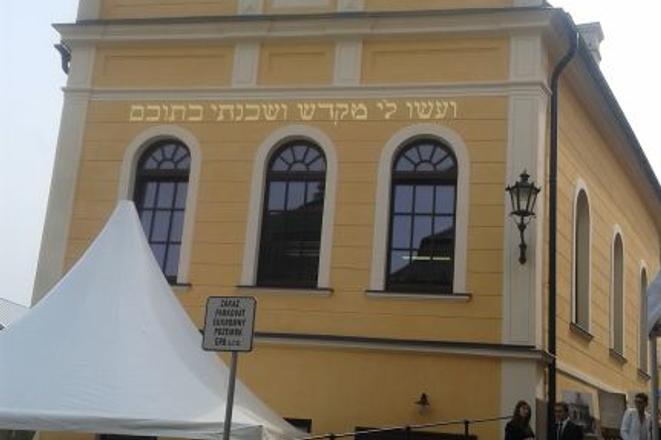THE BUILDING of a neolog synagogue in Banská Štiavnica that was dilapidating for decades has been reconstructed and now serves a new function. The religious site, which was used for a tinsmith workshop, driving school and a store for placards and posters for communist celebrations during the past regime was abandoned and left to fall apart between 1989 and 2009, will now become the residence of a brewery, housing the management and part of its secondary activities.
The synagogue was built in 1892 as a Neolog synagogue, with Renaissance and Classicist architectural influence. Up until 1941, it was used for religious services, but then the anti-Semitic laws of the wartime Slovak state banned such activities. After World War II, the building was put back to its original use for four more years, but in 1949 the Jewish religious communities sold it to the Czechoslovak state.
After the 1989 revolution it fell into private hands, belonging to five owners consecutively who let it go un-restored and unused. In 2009, Eduard Rada bought it and started to repair it, with the idea to use it for the administration and part of production for the local ERB brewery.
However, the central Association of Jewish communities had two conditions when selling the building: not to use it for “unworthy” purposes and to place a plaque on the façade, commemorating the religious history of its construction. The synagogue was built from voluntary contributions from members of the Jewish community.
Beginning September the latter condition was fulfilled, the SITA newswire wrote. The former condition will also be fulfilled, as the ERB company plans to use it for the brewery only until 2019 when it will be emptied and used for cultural events from then on.
The ERB brewery also bought the adjacent building, a cultural monument known as Green House, where the small brewery with a restaurant and a small theatre in the attic are located. It also owns the Hellenbach house next to the synagogue which will be turned into a four-star hotel.



 Synagogue in Banská Štiavnica, now the site of the ERB brewery. (source: TASR)
Synagogue in Banská Štiavnica, now the site of the ERB brewery. (source: TASR)